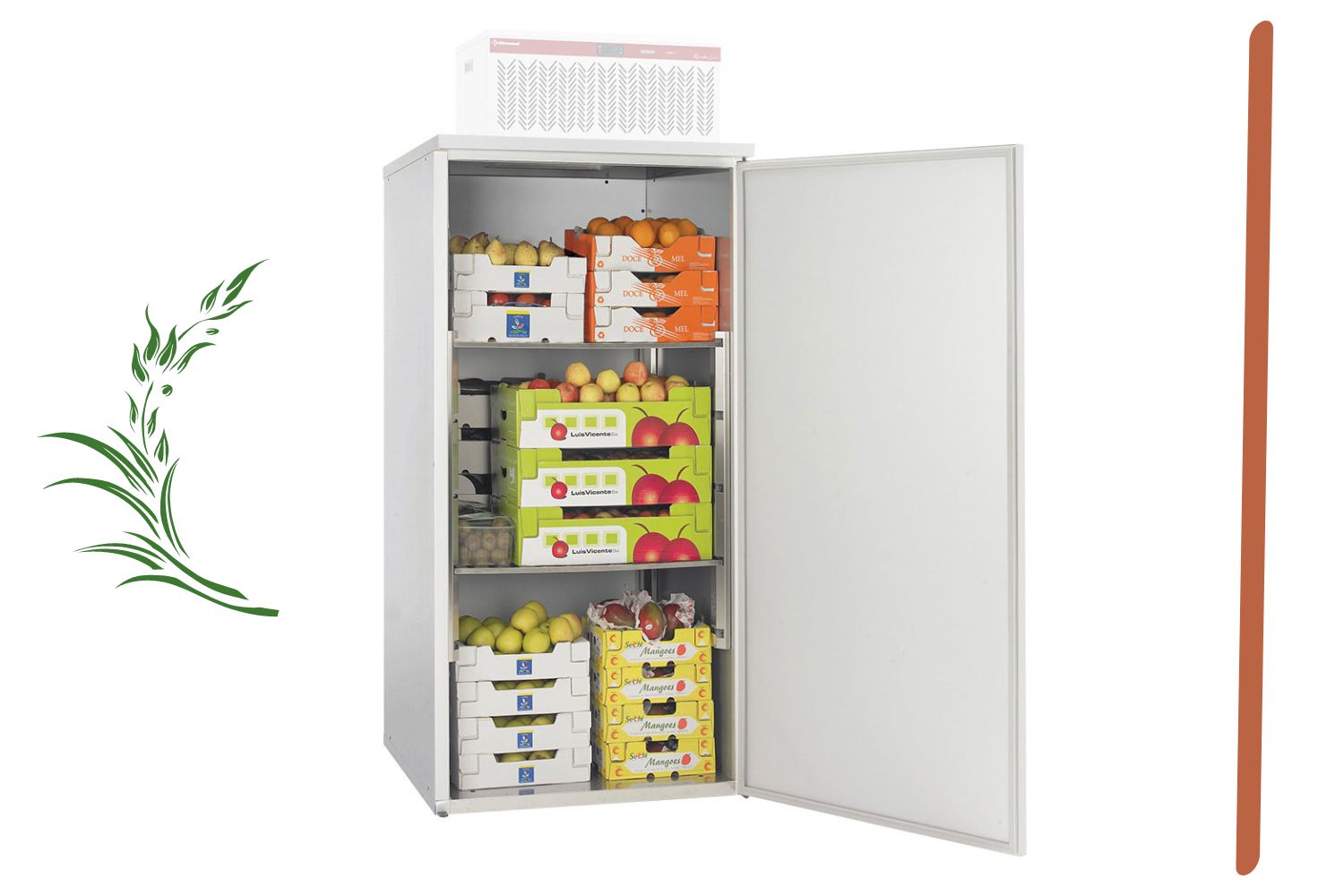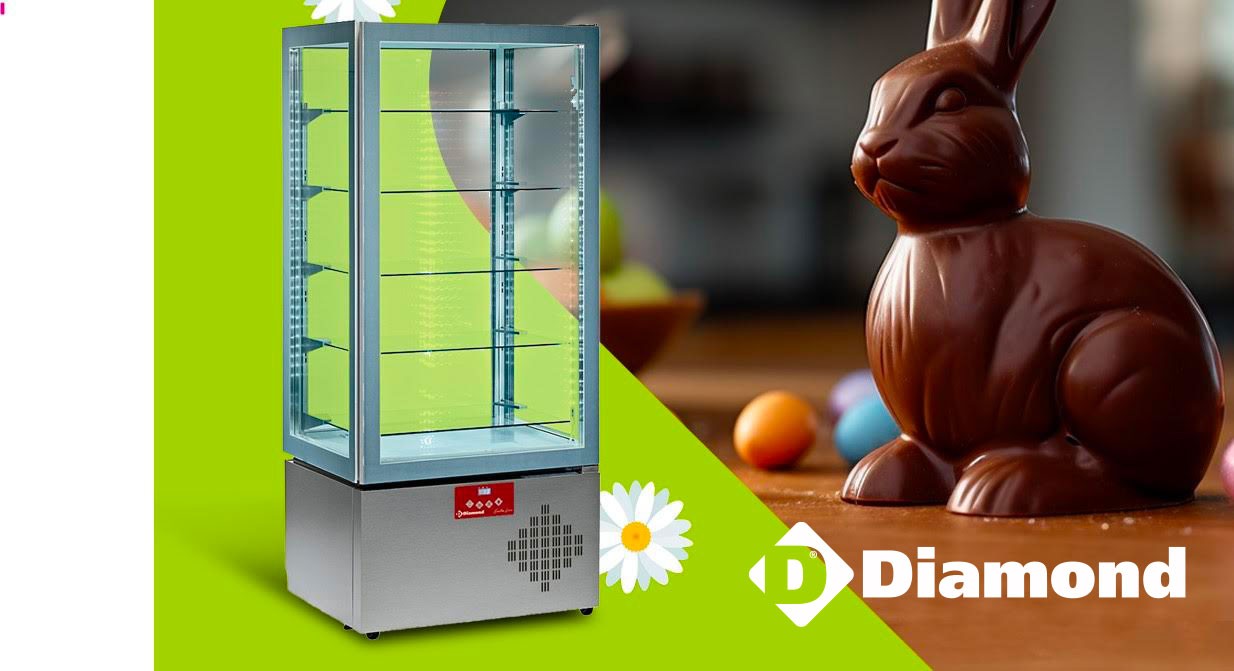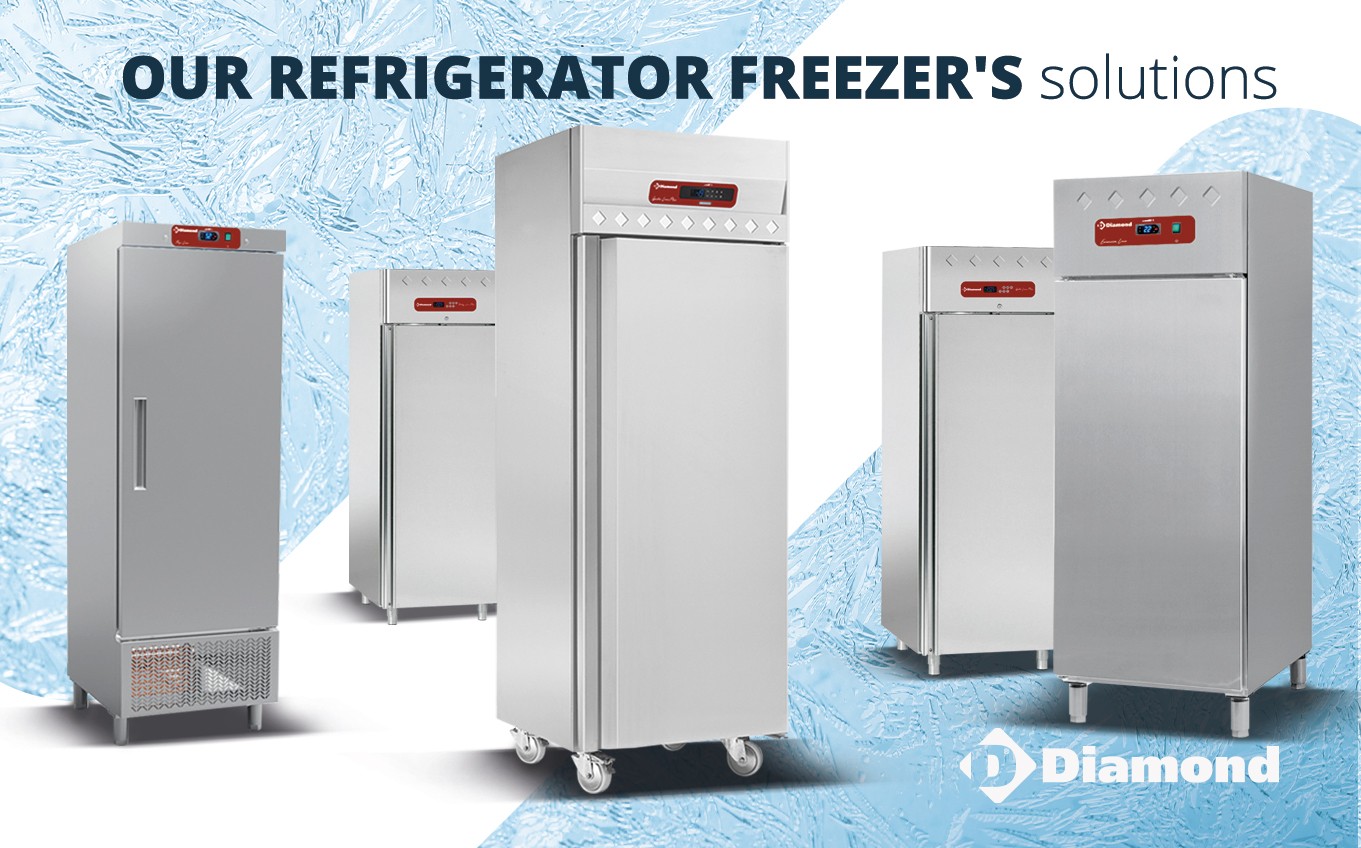Table of contents
What is a refrigerated cabinet?
The professionalrefrigerated cabinet is an essential piece of refrigeration equipment in the catering,food processing and food service industries. Its essential role is to ensure that the cold chain is maintained by keeping foodstuffs at a stable temperature, thus preserving their quality and freshness.
This hybrid solution, halfway between refrigerator and cold room, offers ideal storage space for keeping products at the right temperature, avoiding any risk of premature deterioration.
What’s the difference between a positive and negative refrigerated cabinet?
Refrigerated cabinets fall into two categories: positive and negative.
Positive refrigerated cabinets maintain a temperature above 0°C, ideal for preserving foods such as meat, fish, ready meals, fruit and vegetables.
Negative refrigeration cabinets keep products at a temperature below 0°C, and are ideal for ice cream, sorbets and frozen products such as meat, fish, fruit and vegetables.
How to choose a refrigerated cabinet
Would you like to equip your restaurant or professional establishment with a refrigerated cabinet for storing your foodstuffs? When choosing quality refrigeration equipment, there are a number of essential criteria to take into account, in line with your specific needs.
Products to be stocked
Assessing your product stock is fundamental to determining whether you need a positive or negative refrigerated cabinet.
| Type | Produits à stocker |
|---|---|
| Armoire positive | Fruits et légumes, qu’ils soient frais ou cuits Œufs et divers produits laitiers Viandes et poissons, disponibles crus ou cuits Pâtisseries diverses Plats déjà cuisinés Sélection de charcuteries Produits spécifiquement pour la décongélation Sauces faites maison |
| Armoire négative | Crèmes glacées, sorbets et glaces variées Viandes et poissons en version congelée Légumes et fruits disponibles en congelés |
The type of cold generated
The choice of cooling system influences the way your food is stored in the refrigerated cabinet. You can choose between static cooling, similar to a conventional fridge, and ventilated cooling, where the air is evenly distributed by a fan. Static cooling offers energy savings and silent operation, while ventilated cooling is suitable for intensive use, with an even temperature throughout the cabinet.
Static cold
Benefits
- Quiet
Disadvantages
- Temperature inside the cabinet is sensitive to door openings
Ventilated cooling
Benefits
- Ease of storage, allowing products to be easily accessed and organized
- Uniform temperature distribution across the entire cabinet space, ensuring optimal preservation
Disadvantages
- Risk of stored food drying out, which can affect quality and texture
Door selection
The type of door, glass or solid, depends on the use of the refrigerated cabinet. Solid doors are ideal for quick access to products in the kitchen, easy to maintain and economical. Glass doors, on the other hand, are perfect for selling products to customers and displaying products, enhancing their presentation, making them a preferred choice for self-service establishments.
| Type | Utilisation | Avantages |
|---|---|---|
| Porte pleine | Accès rapide et efficace aux produits en cuisine | Entretien simple et pratique Option économique pour la gestion en cuisine Excellente isolation pour une conservation optimale des produits |
| Porte vitrée | Destinées à la vente et à l’exposition des produits aux clients | Mise en valeur des produits grâce à une présentation visuelle améliorée Idéal pour les établissements offrant un service en libre-service, permettant aux clients de voir facilement les options disponibles |
Tropicalized or not?
If your environment is subject to high temperatures, opt for a tropicalized refrigerated cabinet capable of withstanding extreme conditions up to 43°C. This ensures that the refrigerated cabinet operates smoothly even in hot clim ates or in kitchens with heat-generating cooking appliances.
Which options to choose?
You can enhance the user-friendliness of your professional refrigerated cabinet by selecting certain additional features. These options can help you regulate, control and optimize the storage and display of your products:
- Digital thermostat: Allows you to set the temperature with fine precision to suit your specific needs.
- Automatic defrosting system: Simplifies cabinet maintenance by eliminating the need for manual defrosting.
- Built-in thermometer: Allows temperature control without having to open the door, thus maintaining energy efficiency.
- LED lighting: Provides optimum product display, improving visibility and customer appeal.
- Temperature alarm: alerts you if the storage temperature is exceeded, guaranteeing the safety and quality of stored products.
By choosing these options, you can customize your refrigerated cabinet to perfectly match your needs and those of your establishment.
The price
The price of a professional refrigerated cabinet varies according to its capacity, door type, additional options and cooling system. Smaller models generally start at around €350, while larger cabinets can cost up to €7500. Take these factors into account to find the right refrigerated cabinet for your needs and budget.
Refrigerated cabinet legislation
Legislation on refrigeration equipment is rigorous, to guarantee food safety and respect for the cold chain in the catering and food-processing industries.
Delicate product preservation
Preserving foodstuffs in a professional refrigerated cabinet is an act that requires rigorous precision and meticulous attention:
- Storage temperature: To maintain the freshness of foodstuffs, the temperature must be set at a strict minimum of 3°C for fresh products and -18°C for frozen products.
- Hermetically sealed containers: Products that have already been opened need to be stored in a sealed container, protected from contamination.
- Rigorous labeling: Each container must be marked with a label specifying the packaging date and use-by date, with recommended consumption within 72 hours.
- Organization of storage areas: Within the cabinet, whether positive or negative, foodstuffs must be arranged in a way that reflects their specificity, with each shelf duly labeled.
- Suitable installation: The location of the cabinet must be carefully chosen, away from garbage and dustbins, in an immaculate area.
Compliance with refrigerant regulations
With Europe’s enactment of the F-Gas II law in 2020, ecological responsibility has become a priority. This ambitious law aims to reduce emissions of fluorinated gases by 79% by 2030, leading to the banning of certain fluids for their environmental impact.
Some, like R404, have already been banned, while others are in the process of being phased out.
The choice of a refrigerated cabinet should be made in favor of a less polluting natural gas. Alternatives exist, such as :
- HFCs: Like R442A
- HFO: Like R407A and R407F
- Natural solutions: such as CO2 or ammonia
Clearly, the art of food preservation and respect for ecological regulations are essential components in the selection and use of a professional refrigerated cabinet, reflecting a symbiosis between quality, safety and environmental responsibility.
FAQ – Refrigerated cabinet
How does a refrigerated cabinet work?
The operation of a refrigerated cabinet depends on the type of cooling used. In a static-cooling cabinet, air circulates freely inside thanks to an evaporator, creating non-homogeneous temperatures, warmer at the top and colder at the bottom. A fan-cooled cabinet, on the other hand, propels air evenly throughout the space, maintaining a stable temperature.
How do you store products in a static refrigeration cabinet?
In a static-cooling refrigerated cabinet, it’s important to store products correctly, taking into account the different temperature zones. The upper section is ideal for fresh fruit and vegetables, fresh herbs and ripening cheeses. The middle section is suitable for cooked meats and fish, cooked fruit and vegetables, dairy products and pastries. Finally, the lower section is suitable for raw meats and fish, cold meats, prepared and ready-cooked meals, as well as defrosting products.
How to maintain a refrigerated cabinet
Regular maintenance of your refrigerated cabinet, whether positive or negative, is essential to extend its life and ensure its smooth operation. Regularly clean the grilles, doors and windows, condenser filter, condenser and compressor, as well as the entire external stainless steel structure. Also check electrical installation and safety, thermostat, on/off switch, evaporator or fan guard (depending on type of refrigeration), defrost device and fluid level. These preventive measures help prevent breakdowns and reduce energy consumption.






